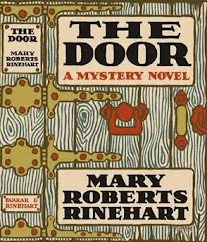
dustjackets.com
About the author: Leslie Ford is a pseudonym of Zenith Jones Brown, 1898-1984. She also wrote as David Frome and Brenda Conrad. Also see this Book Scribbles blog: Leslie Ford's Fall From Grace.
Locale: Natchez, Mississippi
Major characters:
- Louise Gould, Garden Club member, our narrator
- Cornelia Cartwright, Garden Club president
- Lusby, Cornelia's chauffeur
- Alec Cartwright, Cornelia's stepson
- Miss Laetitia "Letty" Drayton, Garden Club secretary
- Judge Ed Drayton, Letty's brother
- Kate Drayton, Letty's sister
- Anne Drayton
- Lawrence Drayton, Ed's son (Anne's cousin)
- Steven Heywood
- Millicent Storm, Garden Club member
Synopsis: Garden Club president, wealthy (and pushy) Cornelia Cartwright is determined to go to Natchez on a Garden Club pilgrimage. She brings along Louise Gould, and to save on expenses includes mousy club secretary Miss Letty Drayton, as she has family in Natchez; and Cornelia plans to impose on their hospitality instead of (gasp!) spending money on a hotel. Letty is reluctant to go at all, apparently embarassed by her family's poor situation. The three depart, driven by Cornelia's chauffeur Lusby.
Along the way they encounter a young Philadelphian, Steven Heywood, also bound for Natchez to look up a certain young woman. He is the heir to a will which leaves him several plantations if he marries her.
The three ladies arrive in Natchez and are astounded to find Letty's family not in a hovel, but in a palatial mansion, "Antigua". Letty is received coldly by her brother Judge Ed Drayton, sister Kate Drayton, and nephew Lawrence Drayton (Ed's son). Her niece Anne Drayton is the only one to welcome her warmly.
Steven Heywood arrives at the neighboring mansion, "Tangiers", owned by his family. He is looking for his young woman, who turns out to be Anne. However, Anne is already engaged (at her uncle Ed's direction) - to her cousin (!) Lawrence. Anne is also pursued by Cornelia's stepson, Alec.
Letty has a secret concealed in a locket, which everyone tries to obtain. This leads to two deaths; a sour end to a Garden Club event.
Review: Billed as a "romantic suspense", this is a spellbinding page turner in the style of Mignon G. Eberhart. I found it quite enchanting with multiple levels of intrigue - for instance, Steven Heywood's continual flirting with Mrs. (!) Gould, a pushy uncle demanding two cousins marry, the contrast of palatial Antigua (home of the Draytons) and neighboring down-at-the-heel Tangiers (home of the Heywoods).
There are remnants of southern culture: the north/south feuds, White/Black segregation with Blacks all cast in servant roles, corrupt officials, and several instances of the N-word.
Mysteries include:
Why is Letty's family so hostile to her?
Who exactly is Anne?
Who will Anne wind up with? Lawrence? Alec? Steven?
What is in Letty's locket? Who is doing away with people to get it?
All are resolved in a suprising turn of events.

























